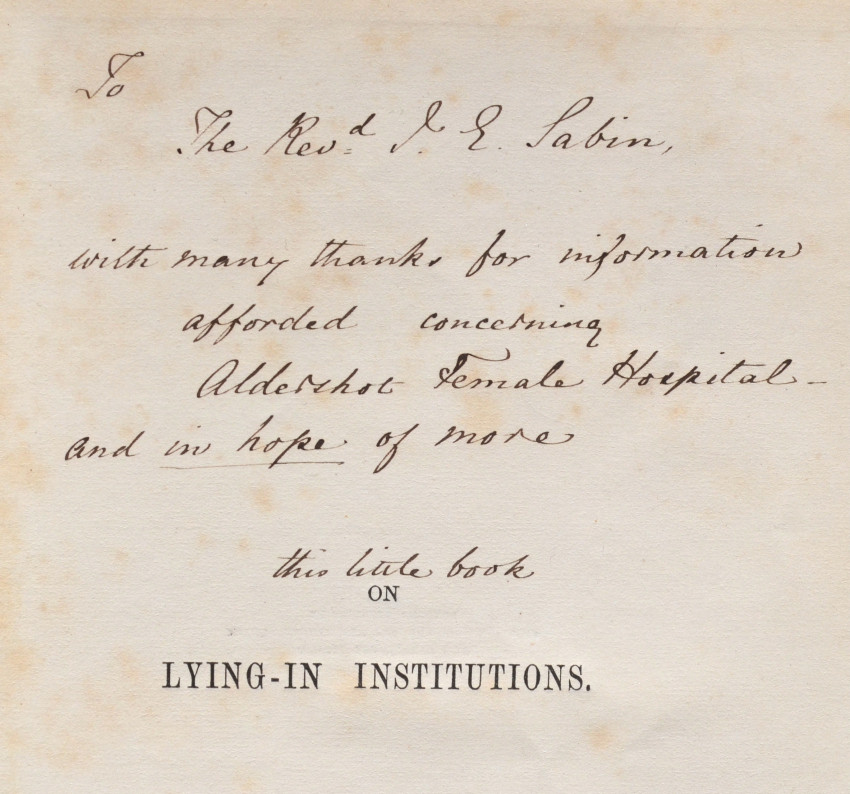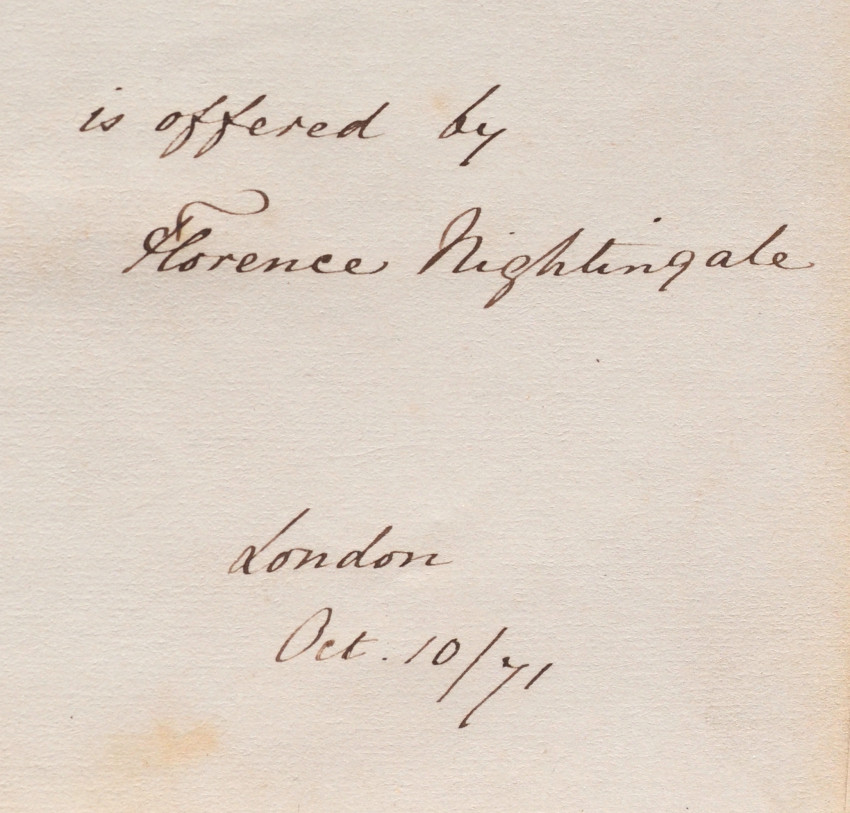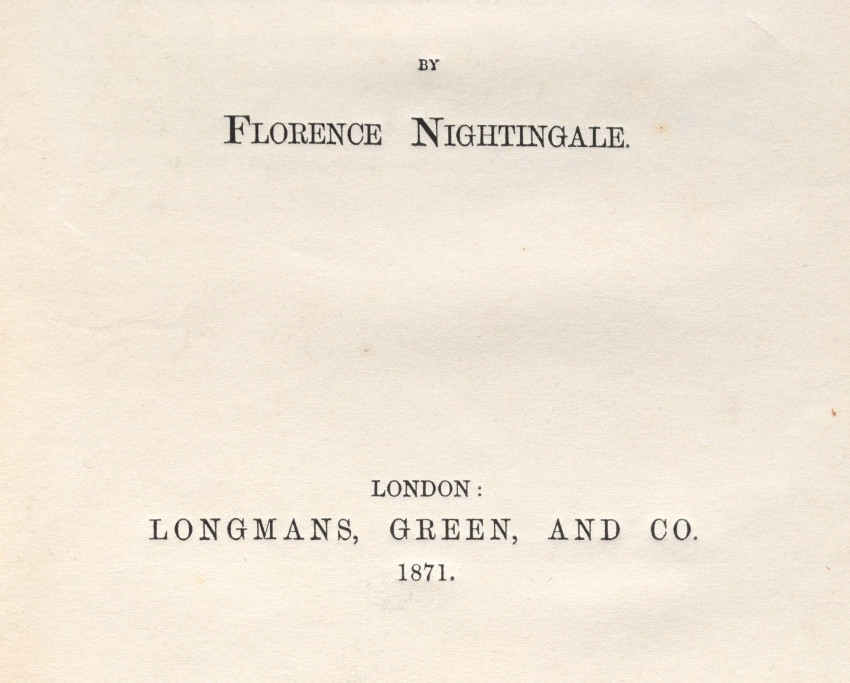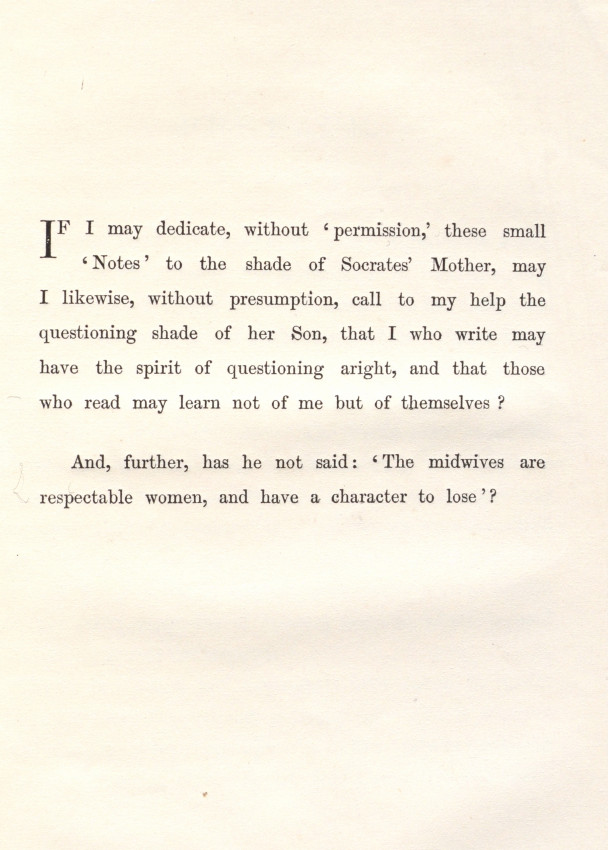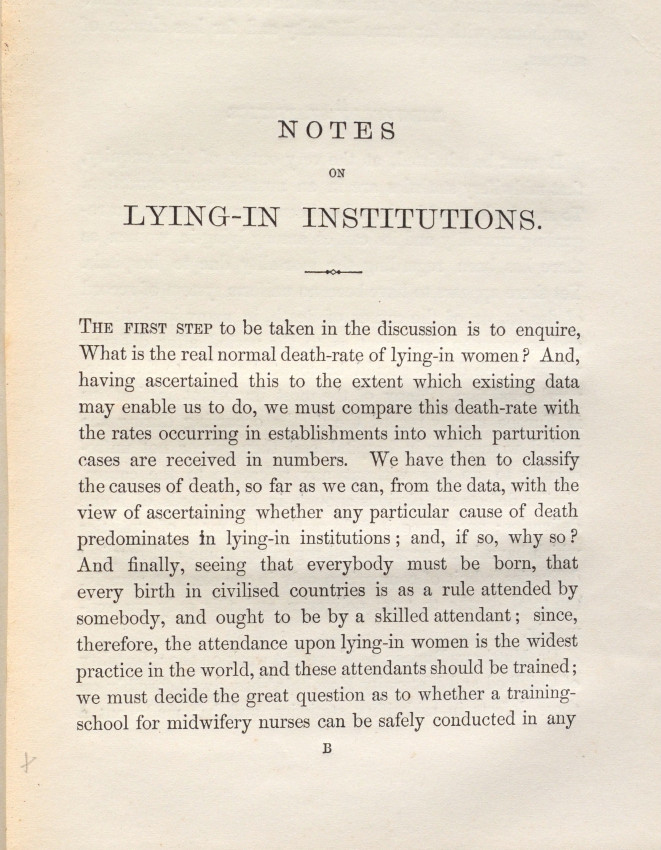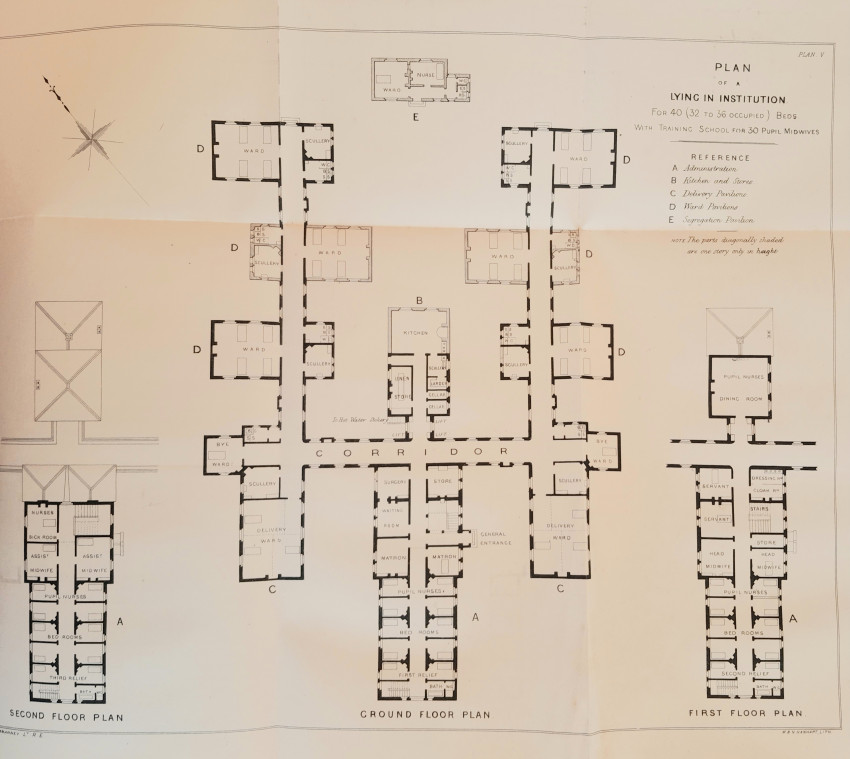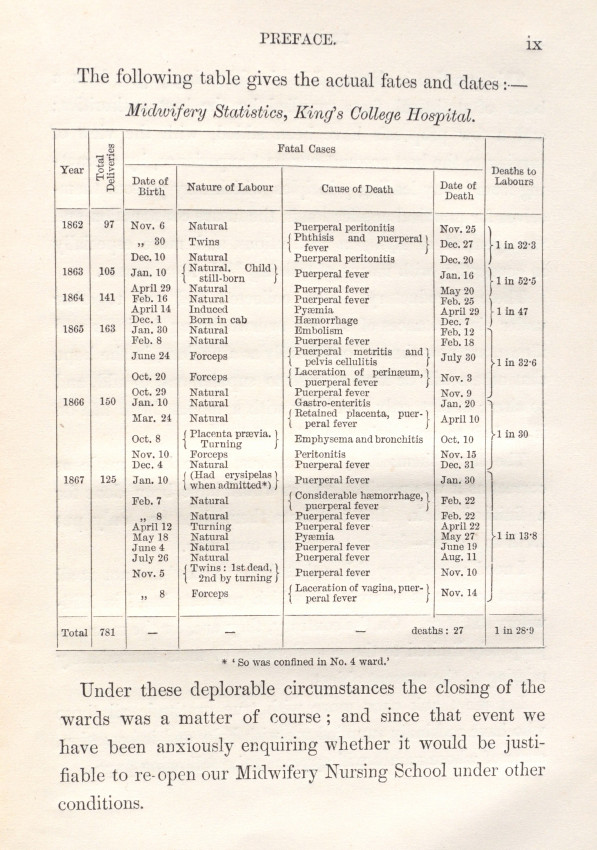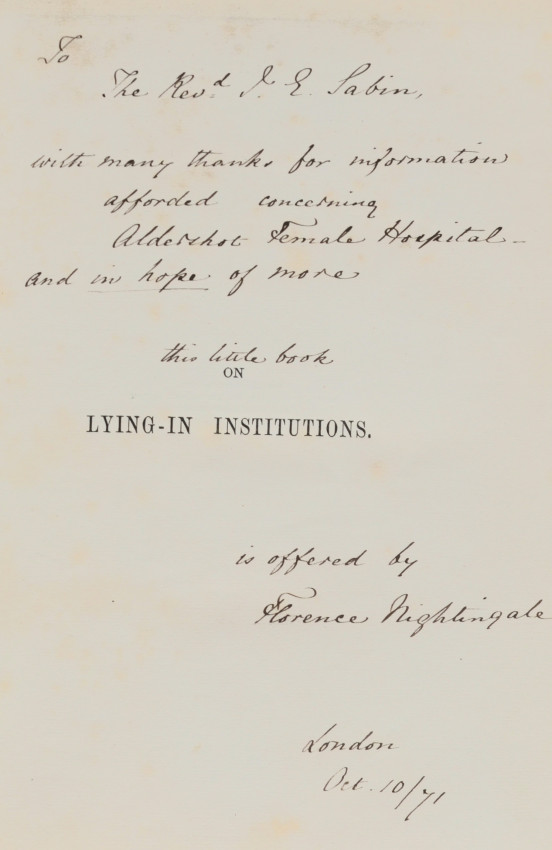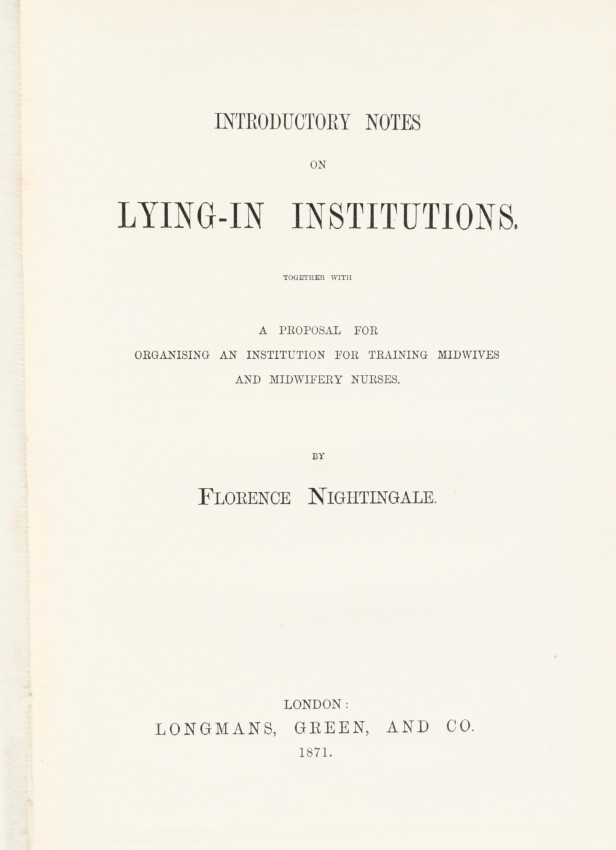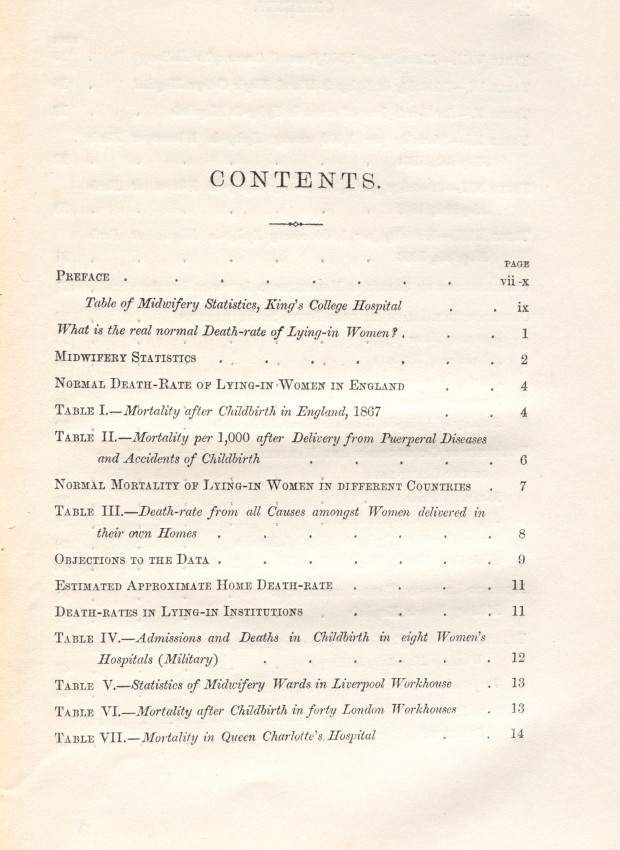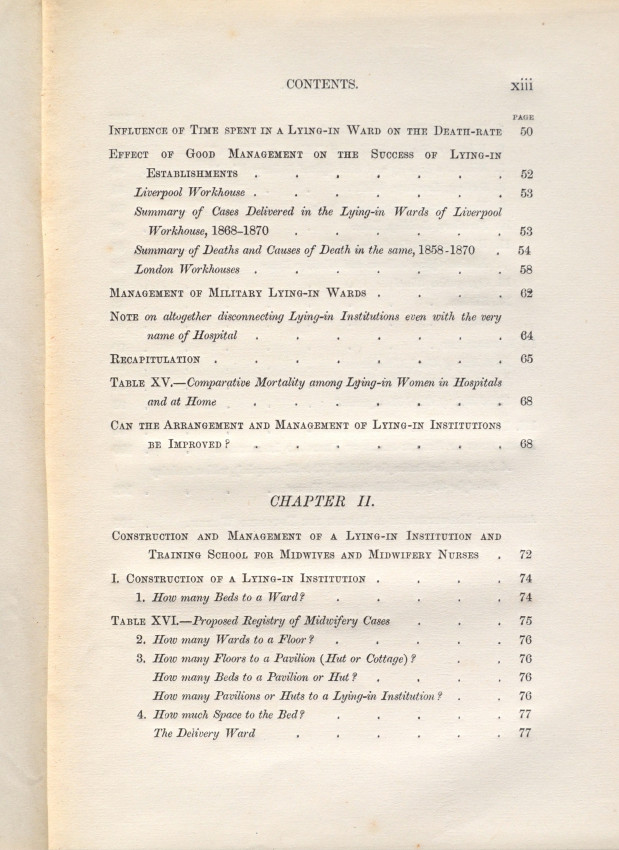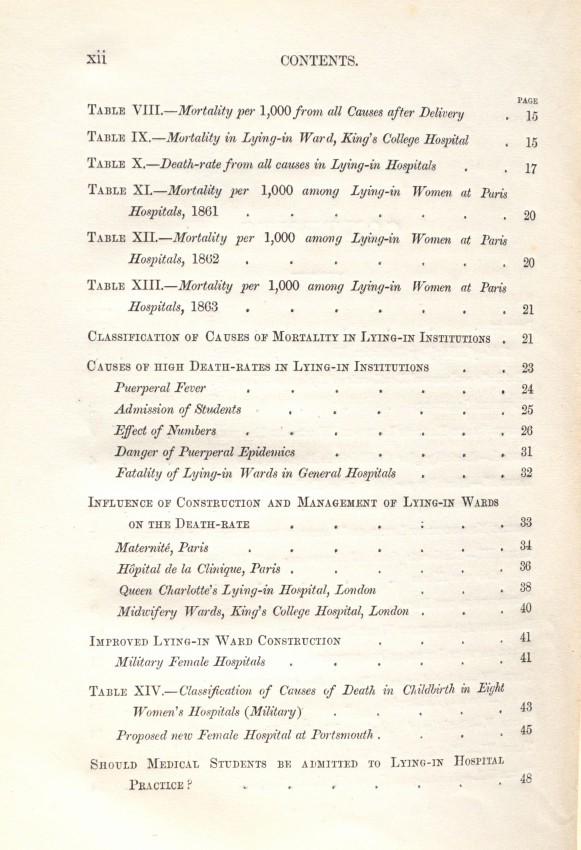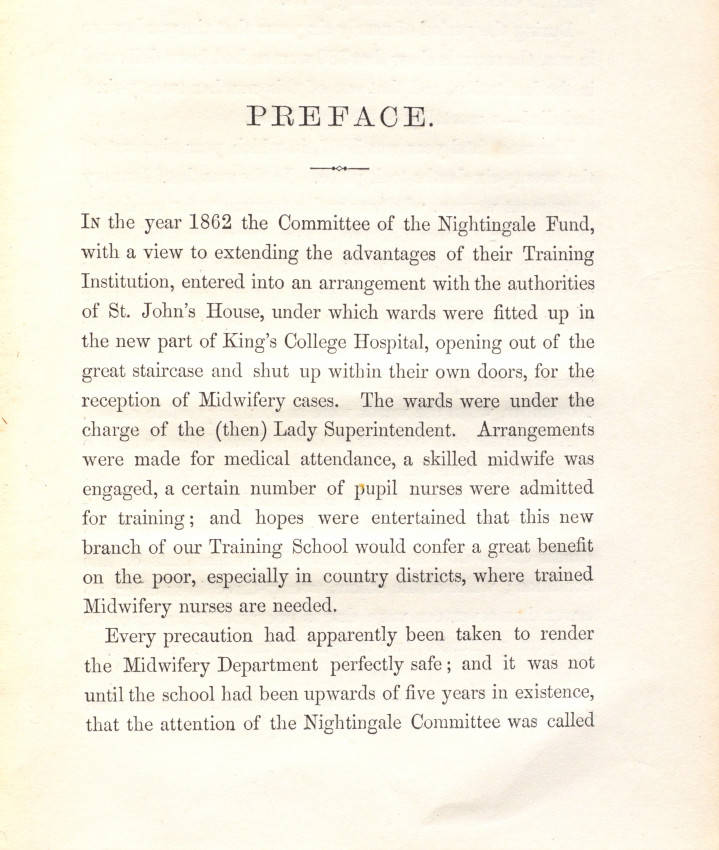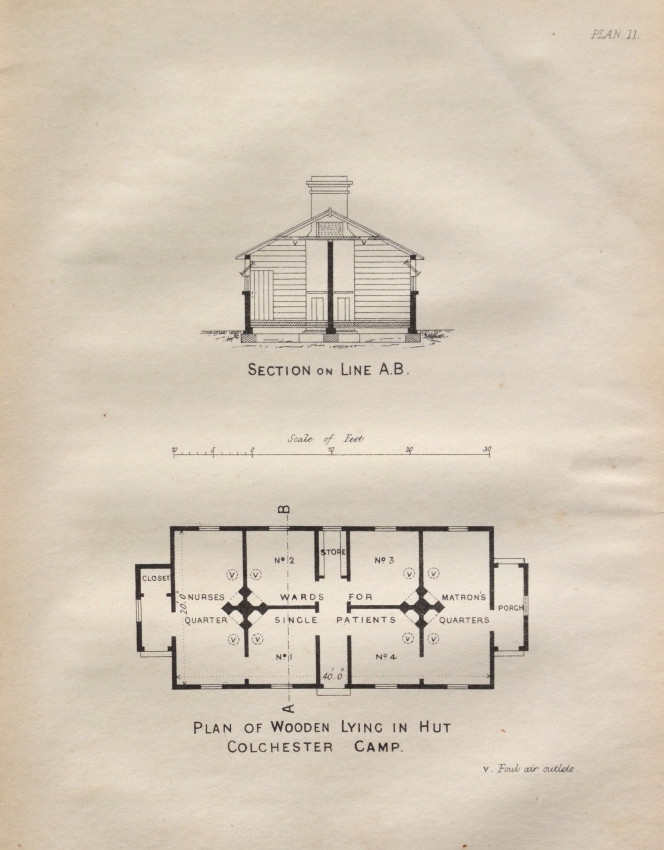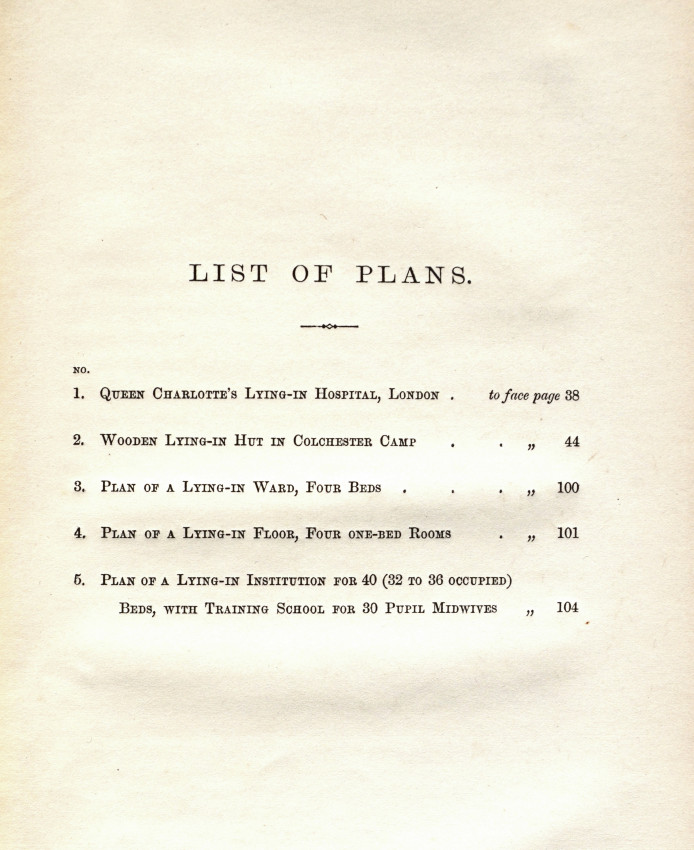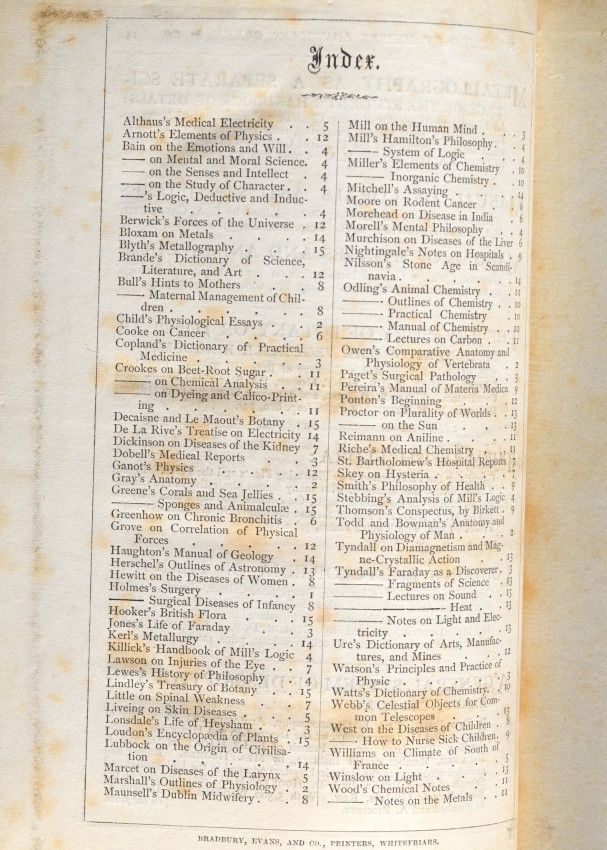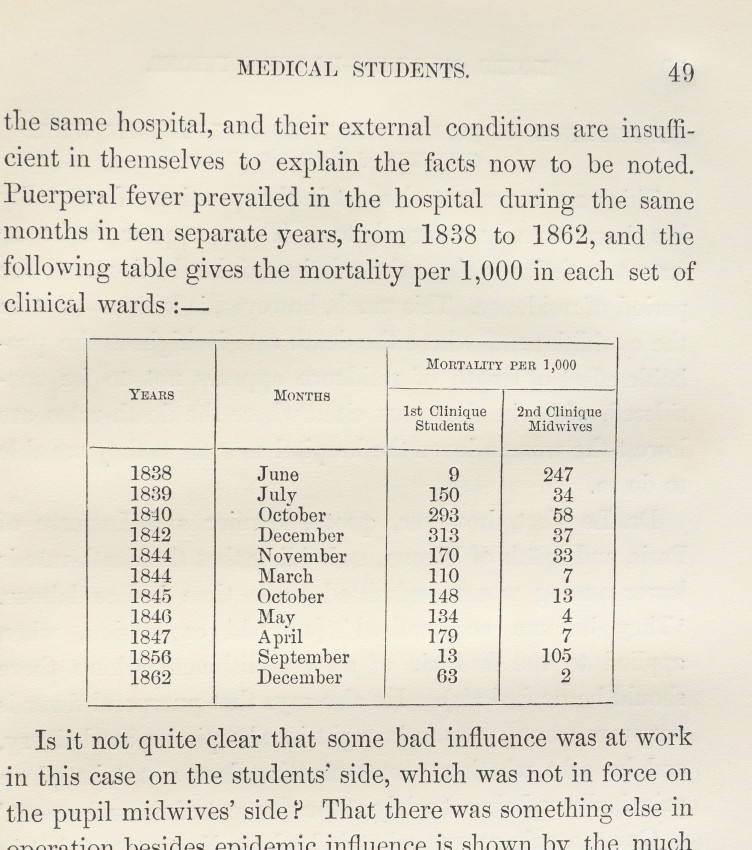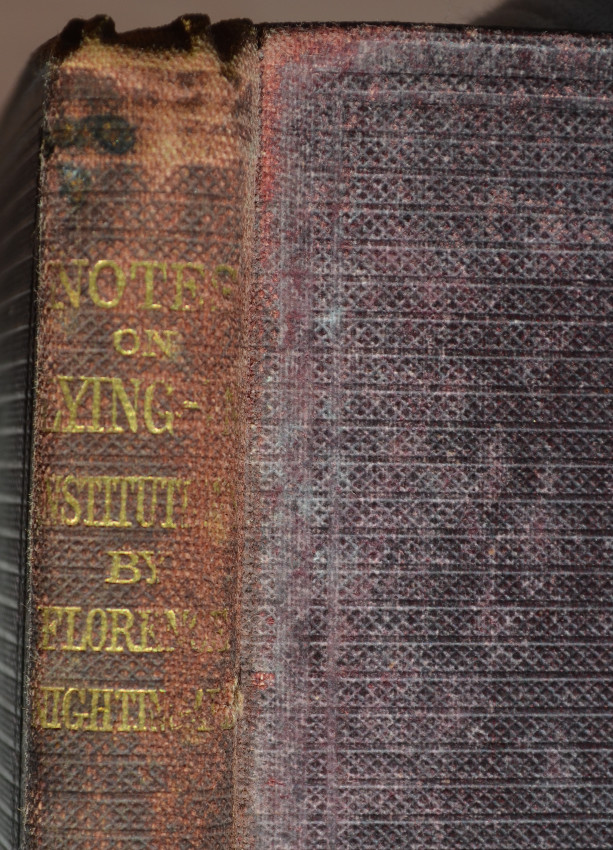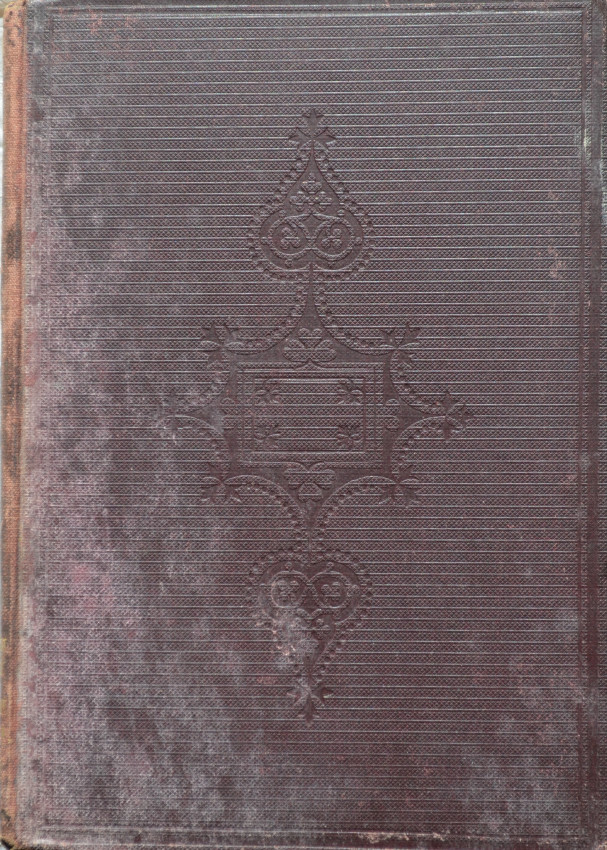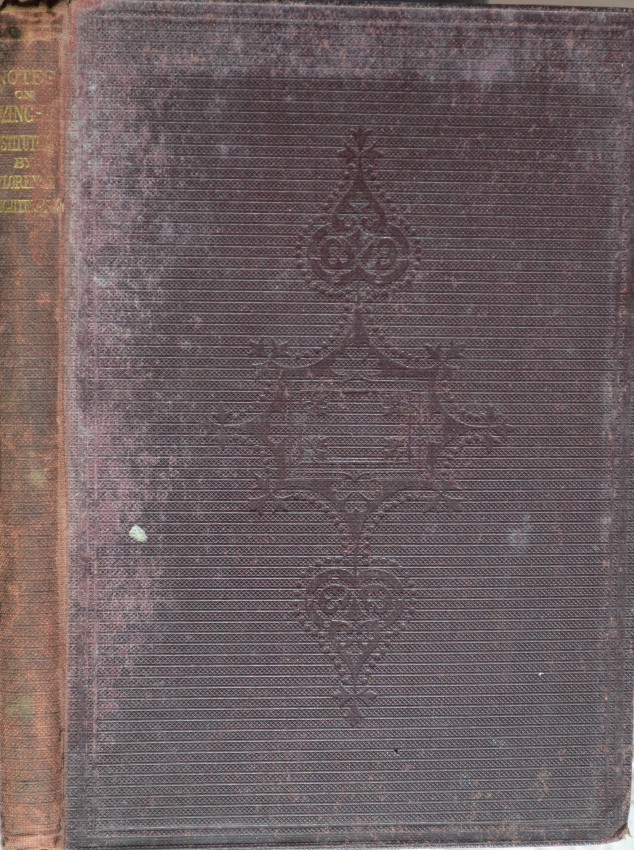Original maroon cloth with title in gilt on spine, brown end pages. xiv + 110 + 5 leaves of plates including one fold-out Plan of Lying in Institution + 15 pages of advertisements + index.
Binding tight, boards and spine soiled and discolored, corners bumped with minimal loss, scattered light foxing on first and last pages with heavy foxing on index page, fold-out plan creased at one fold.
Inscribed, Signed and Dated by the author on the first title page. The inscription to Rev. Labin reads: "With many thanks for information afforded concerning Aldershot Female Hospital, and in hope of many more. This little book 'On Lying-in Institutions', is offered by Florence Nightingale. London Oct 10/71"
"Lying in is a historical term for the period after childbirth where a new mother was placed on bedrest. Lying-in hospitals were maternity hospitals where women would receive dedicated care during pregnancy, labour and during the antenatal period".
"Nightingale discusses the maternal death statistics of lying-in institutions and makes suggestions, with accompanying plans, for changes to hospital layouts which could reduce rates of infection and maternal death". -Royal College of Obstetricians and Gynaecologists.
"The greatest postnatal killer of the nineteenth century was puerperal fever. A vicious and usually fatal form of septicaemia, puerperal or childbed fever was known to occur in maternity hospitals far more frequently than at home births, and to spread faster in crowded wards than in those with fewer patients. Its cause was unknown. In this precise statistical analysis of the facts, gathered from several sources across the major cities of Europe, Florence Nightingale explores the mystery of puerperal fever and its possible causes. She stresses the necessity of good ventilation in hospitals, condemning those with overcrowded wards, and cites instances where the layout of wards has a noticeable correlation with the number of deaths. Published in 1871, just before Pasteur's work on germ theory proved that the problem could be all but eradicated if doctors washed their hands more rigorously, this work remains clear, scholarly and engaging". -from the 2012 reprint.
Florence Nightingale (12 May 1820-13 August 1910) was an English social reformer, statistician and the founder of modern nursing. Nightingale came to prominence while serving as a manager and trainer of nurses during the Crimean War, in which she organised care for wounded soldiers at Constantinople. She significantly reduced death rates by improving hygiene and living standards. Nightingale gave nursing a favourable reputation and became an icon of Victorian culture, especially in the persona of "The Lady with the Lamp" making rounds of wounded soldiers at night.
In 1860, she laid the foundation of professional nursing with the establishment of her nursing school at St Thomas' Hospital in London. It was the first secular nursing school in the world and is now part of King's College London. In recognition of her pioneering work in nursing, the Nightingale Pledge taken by new nurses, and the Florence Nightingale Medal, the highest international distinction a nurse can achieve, were named in her honour, and the annual International Nurses Day is celebrated on her birthday. Her social reforms included improving healthcare for all sections of British society, advocating better hunger relief in India, helping to abolish prostitution laws that were harsh for women, and expanding the acceptable forms of female participation in the workforce.
Nightingale was a pioneer in statistics; she represented her analysis in graphical forms to ease drawing conclusions and actionables from data. She is famous for usage of the polar area diagram, also called the Nightingale rose diagram, equivalent to a modern circular histogram. This diagram is still regularly used in data visualisation.
Nightingale was a prodigious and versatile writer. In her lifetime, much of her published work was concerned with spreading medical knowledge. Some of her tracts were written in simple English so that they could easily be understood by those with poor literary skills. She was also a pioneer in data visualisation with the use of infographics, using graphical presentations of statistical data in an effective way. Much of her writing, including her extensive work on religion and mysticism, has only been published posthumously. -wikipedia
- Binding Condition: Fair
- Overall Condition: Fair
- Size: 22x15.5cm
- Sold By: Richmond Books and Prints
- Contact Person: John Donaldson
- Country: South Africa
- Email: [email protected]
- Telephone: 081 270 8827
- Preferred Payment Methods: Credit Card, Electronic Transfer & Paypal
- Trade Associations: AA Approved


